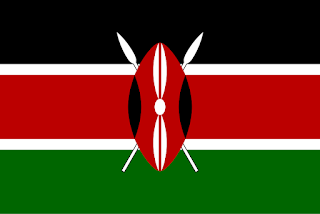Education is a fundamental human right, yet millions of
children with disabilities or special needs continue to face barriers to
accessing quality education. Inclusive education—a system that ensures all
students, regardless of their abilities, learn together in mainstream
classrooms—has emerged as a powerful solution to this challenge. However, the
way inclusive education is implemented varies widely across the globe, shaped
by cultural, economic, and policy contexts.
In this blog, we’ll explore how different countries are
embracing inclusive education, highlighting their unique approaches, successes,
and challenges. By learning from these diverse models, we can foster a global
dialogue on best practices and work toward a more equitable future for all
learners.
Finland: A Holistic Approach to Support Systems
Finland is often celebrated for its world-class education system, and its approach to inclusive education is no exception. Finnish schools prioritize early intervention and individualized support, ensuring that every student receives the help they need to thrive.
Key Features:
- Highly
trained teachers who are equipped to address diverse learning needs.
- Collaborative
teaching models, where special education teachers work alongside
classroom teachers.
- A
strong emphasis on student well-being, with access to counseling and
mental health services.
Case Study:
In one Helsinki school, a co-teaching model has been successfully implemented. A general education teacher and a special education teacher work together in the same classroom, providing tailored support to students with varying needs. This approach has not only improved academic outcomes but also fostered a culture of inclusion and mutual respect among students.Kenya: Community-Based Inclusion
In Kenya, where resources are often limited, inclusive
education relies heavily on community involvement. Local communities, parents,
and NGOs play a crucial role in supporting children with disabilities and
ensuring they are integrated into mainstream schools.
Key Features:
- Community-driven
initiatives that address cultural stigmas and promote awareness.
- Training
programs for teachers and parents to better support children with special
needs.
- Partnerships
with organizations like UNICEF to provide resources and infrastructure.
Case Study:
The "Inclusive Education Program" in rural Kenya has transformed the lives of many children with disabilities. Through this program, teachers receive training on inclusive practices, and schools are equipped with assistive devices like wheelchairs and Braille materials. Community volunteers also help identify children who are out of school and encourage their families to enroll them.
Canada: Policy-Driven Inclusion
Canada’s inclusive education system is rooted in strong
policies and legislation, such as the Canadian Charter of Rights and Freedoms,
which guarantee the right to education for all.
Key Features:
- Differentiated
instruction and Universal Design for Learning (UDL) to meet diverse
learning needs.
- Collaboration
between general and special education teachers to create inclusive
classrooms.
- A
focus on equity, ensuring that students from marginalized communities
receive additional support.
Case Study:
In Ontario, schools have adopted a framework called "Learning for All," which emphasizes personalized learning plans for students with special needs. This approach has led to significant improvements in student engagement and achievement, demonstrating the power of policy-driven inclusion.Italy: A Model of Full Inclusion
Italy is known for its commitment to full inclusion, where
nearly all students with disabilities attend mainstream schools. This model has
been in place for decades and serves as an inspiration for other countries.
Key Features:
- Individualized
Education Plans (IEPs) tailored to each student’s needs.
- Support
teachers who work alongside classroom teachers to provide additional
assistance.
- A
strong emphasis on social integration and peer support.
Case Study:
In a primary school in Rome, students with and without disabilities learn side by side, with support teachers ensuring that everyone can participate fully. While the model has faced challenges, such as limited resources, it has also shown remarkable success in fostering a sense of belonging and acceptance among students.India: Inclusion in a Resource-Constrained Context
India faces significant challenges in implementing inclusive
education due to its vast population and limited resources. However, innovative
approaches are making a difference.
Key Features:
- Government
initiatives like the Sarva Shiksha Abhiyan (Education for All Movement)
and the Rights of Persons with Disabilities Act.
- Community-based
solutions, such as mobile schools and volunteer programs.
- Partnerships
with NGOs to provide training and resources for teachers.
Case Study:
In Rajasthan, a mobile school program brings education to children in remote areas, including those with disabilities. Equipped with assistive technologies and staffed by trained teachers, these mobile units ensure that no child is left behind.Challenges and Lessons Learned
While these models demonstrate the potential of inclusive
education, they also highlight common challenges:
- Lack
of Resources: Many countries struggle to provide adequate
funding, training, and infrastructure.
- Cultural
Barriers: Stigma and misconceptions about disabilities can hinder
inclusion efforts.
- Inequities: Rural
and marginalized communities often face greater challenges in accessing
inclusive education.
Despite these obstacles, there are valuable lessons to be
learned:
- The
importance of teacher training and professional development.
- The
role of community and parental involvement in driving change.
- The
need for flexible policies that adapt to local contexts.
Fostering a Global Dialogue
Inclusive education is not a one-size-fits-all solution. By
sharing knowledge and experiences across borders, we can create a more
inclusive world for all learners. Whether it’s Finland’s support systems,
Kenya’s community-based approaches, or India’s innovative solutions, each model
offers valuable insights.
Let’s continue this conversation! Share your thoughts, experiences, or questions in the comments below. Together, we can build a global network of educators, advocates, and policymakers committed to inclusive education.
Please Subscribe to our blog for more insights on special education and inclusion.Share this post with your network to spread awareness about inclusive education models and
Join the Conversation: What does inclusive education look like in your community?







Post a Comment